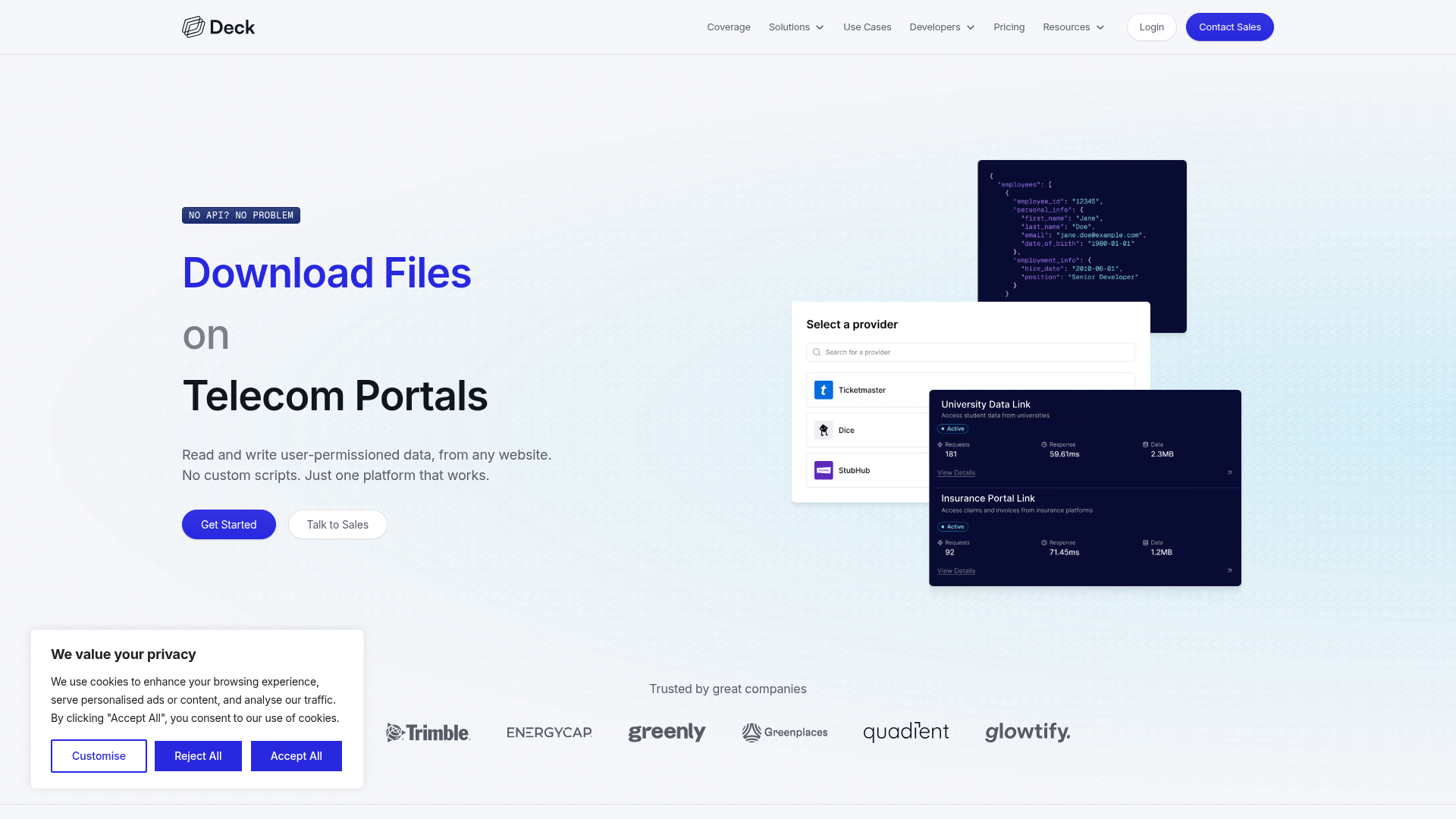Deck
| Introduction: | Deck is an infrastructure layer that enables platforms to securely access user-permissioned data from a vast network of global sources across various industries. |
| Recorded in: | 6/4/2025 |
| Links: |

What is Deck?
Deck is a foundational infrastructure layer designed to facilitate secure and efficient access to user-permissioned data. It serves as a universal connector, allowing platforms across diverse industries—including utilities, telecom, ERP, and e-commerce—to tap into data that users have granted permission for. Deck aims to abstract the complexities of interacting with credential-based websites and disparate data sources, providing clean APIs and structured data. It is built for developers seeking to accelerate integration development without custom solutions, and for product leaders and CEOs looking to unlock new capabilities, reduce maintenance costs, and create defensible value by leveraging existing user data.
How to use Deck
Users, primarily developers and businesses, interact with Deck by integrating its APIs into their platforms. They can start by exploring Deck's extensive network of over 100,000 providers across 40+ countries to see if a desired data source is already supported. If a specific provider is not yet integrated, users can submit a request to add it to the Deck network, with updates going live frequently. The platform offers a "Studio" for building and getting started, implying a developer-centric interface. While specific pricing models are not detailed, it is positioned as a B2B solution, suggesting a sales-led engagement or subscription model for enterprise use.
Deck's core features
Access to user-permissioned data across diverse industries (utilities, telecom, ERP, e-commerce).
Extensive global coverage with over 100,000 providers in 40+ countries.
Ability to look up and verify existing data source integrations.
Feature to request and add new data providers to the network.
Clean and well-documented APIs for seamless developer integration.
Transforms raw data into structured, actionable formats.
Enables triggering real actions based on accessed data.
Reduces the need for custom integration solutions and infrastructure.
Provides a developer-friendly environment ("Studio") for building.
Use cases of Deck
Platforms requiring secure access to customer utility data for energy management or billing.
Telecom companies needing to retrieve user-permissioned call records or service usage data.
ERP systems integrating with external data sources for comprehensive business insights.
E-commerce platforms leveraging user purchase history from other services for personalized experiences.
Workforce technology solutions accessing employee-permissioned data from various systems.
Insurance providers gathering relevant user data for policy underwriting or claims processing.
Marketplaces needing to verify user information or transaction history from external platforms.
Developers aiming to rapidly build and deploy integrations without complex plumbing.
Product leaders seeking to expand platform capabilities and deliver customer-requested integrations efficiently.
Businesses looking to reduce maintenance costs associated with managing multiple data integrations.